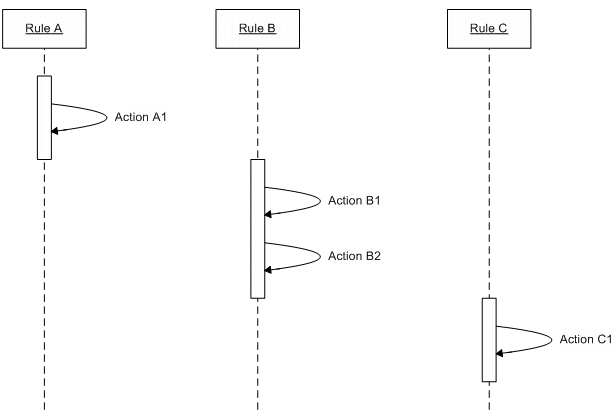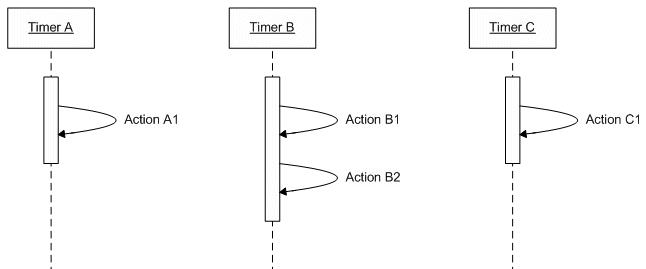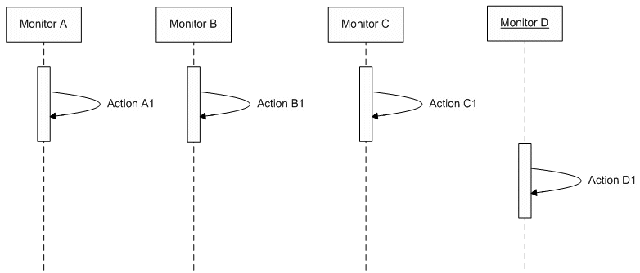Order in which Event Rules are Executed
Almost all of EFT’s Event Rule Actions are executed one after the other (e.g., execute 1, wait until it finishes, execute 2, wait until 2 finishes, execute 3 … etc.), because there may be Actions that follow that depend on the prior Action completing successfully. Each Action is completed before continuing to the next, with a few exceptions, which are described below (Timer Rules, Monitor Folder Rules, and Rules that use the Execute Command Action or AWE Action).
If you create more than one Event Rule for a single type of Event trigger (e.g., Monitor Folder), EFT prioritizes the Rules in the order they appear in the Rule list. You change the priority by moving a selected Rule up or down in the Rule list. The Rule list is grouped by Rule type. You can only prioritize the Rules within a Rule type. For example, you cannot move an On Folder Monitor Rule above an On Scheduler (Timer) Event Rule, but you can prioritize the Rules within the Rule type (e.g., place one Timer Event to occur before another Timer Event).
To change the priority of a Rule
-
In the administration interface, connect to EFT and click the Server tab.
-
On the Server tab, click the Site you want to configure, then click Event Rules. The Rule list appears in the right pane.
-
In the right pane, select the Event Rule you want to move.
-
To reorder the Event Rules, under Rule Priority, click Higher and Lower.

Event Rule Sequence for Matching Event Rules
One or more Event Rules may be triggered when Conditions are met. For Event Rules with duplicate Event trigger definitions and Conditions, but with different Actions, the order of execution is sequential according to the sort order defined in the interface.

Event Rule Sequence for Matching Timer or Folder Monitor Rules
This sequential firing of duplicate Event Rules applies to almost all of EFT’s supported Events. However, the Monitor Folder and Timer Event Rules are not executed at the same time. When you stop the Site or the Server service, EFT breaks all existing connections and waits until all socket threads die. The service can terminate when Timer Event processing is still in progress. The triggering of Monitor Folder and Timer Event Rules occurs almost simultaneously and is controlled by the operating system, not by EFT.

Event Rule Sequence for Matching Folder Monitor Rules
As mentioned above, matching Timer and Monitor Folder Events are not executed at the same time. However, Monitor Folder "threads" are limited to 3 concurrent threads by default. This means that if you have 5 Monitor Folder Event Rules monitoring the same folder and a file is added to the monitored folder, only 3 of the 5 Rules will fire, as determined by the operating system. The 4th and then 5th Rule execute only when one or more of those 3 threads are done firing and executing any actions.
